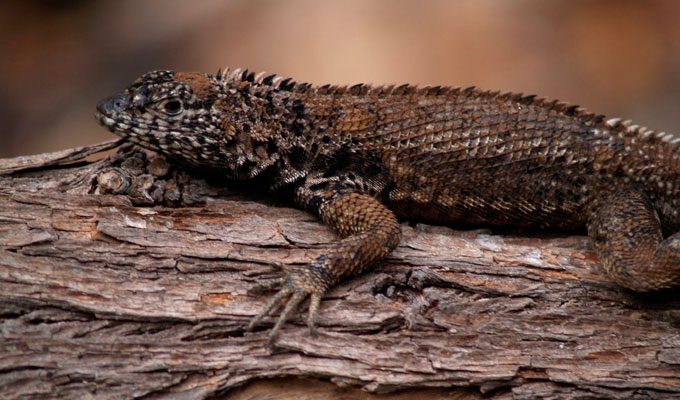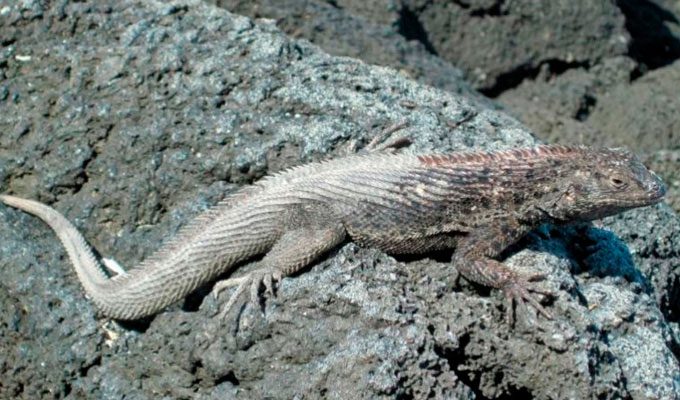The Galapagos lava lizards, like the sea lion, is one of those Galapagos animals that all visitors are bound to come across, but unlike the sea lion, it is barely noticed. The lava lizard is found on all of the main Galapagos Islands in significant numbers, with the exception of Genovesa, Darwin, and Wolf islands.
TALK TO A DESTINATION EXPERT

Diego Zapata

Rosa Mena

Sandy Lara

Diego Zapata

Rosa Mena

Sandy Lara
General Description
The Galapagos lava lizards, similar to Darwin’s Finches, are thought to be an excellent example of Charles Darwin’s theory of evolution by natural selection. There is strong evidence supporting the idea that all seven evolved from one species, as each species demonstrates just slight variations in shape, color and behavior, in accordance with the environment that they are found in. Furthermore, six of the seven species are distributed among six different islands, with just one species inhabiting each island. This suggests that each species evolved in isolation, separated by physical barriers and unable to interbreed. More interesting is that the seventh species inhabits all of the western and central islands. Scientists believe that these islands were all connected at one point during a period of low sea levels. Thus, it is likely that this species also evolved in isolation, but over one massive area, which eventually split into several different islands.
Nevertheless, the differences these lizards reveal are only slight and, if it were not for the fact that no two species live on the same island, it would be next to impossible to identify them. They are generally small lizards, around 5 to 6 inches long, but can grow up to a foot in length and are characterized by their long tails, slim bodies, and pointed heads. Their color, markings, and size not only differ between species but also within species. Some are quite bright and beautifully colored, speckled in copper or showing off golden stripes. However, their colors can vary quite drastically, ranging from grey to green or brown or black. In general, the male is larger than the female and more brightly colored, although the female can be recognized by her red throat. These variations are generally dependent on the habitat where the species lives.

Behavior
While Galapagos lava lizards show no fear of humans and can be easily approached, they are very territorial among their own kind. Males protect areas of up to 400 square meters, which typically include several females’ territories. In order to protect their territory, male lava lizards do “push-ups” in highly visible spaces to threaten intruding lizards. The males also bob their heads in order to dissuade other males from attempting to fight for the territory. If this does not work, the display advances into tail slapping and even bites. Females also do “push-ups” to protect their territory but do so less aggressively.
These displays typically increase during the breeding season (peaks during the warm season) in which males mate with all females that pass through their territory and so they work especially hard to protect them from other males. Females lay between three to six pea-sized eggs approximately every month. These are laid deep in the soil, and babies are left to take care of themselves once they emerge 3 to 12 months later, depending on the species.
Defense Mechanisms of the Galapagos Lava Lizards

Galapagos Lava lizards have two highly effective mechanisms to protect themselves against predators. The most simple is camouflage. If the animal feels threatened (or experiences a temperature change), the lizard is able to change color to blend more effectively into its environment. However, one of their more intriguing characteristics is their ability to drop their tail when a predator grabs hold of it. The tail then continues to move to distract the prey, allowing the lizard to escape. The Galapagos lava lizards are able to regenerate their tails, but it very rarely grows back to the original length. This can harm their chances of breeding, as potential mates are attracted to longer tails; however, this is an essential tool to save the lizards and allows them to live up to ten years.

Javier Garcia

Eduardo Silva

Carolina Escobar
START PLANNING YOUR TRIP

Javier Garcia

Eduardo Silva

Carolina Escobar
Get in touch for more
CONTACT US
Although these lizards seem to be not-so-important, they play a vital role in controlling insect populations, such as the painted locust, as well as moths, flies, beetles, spiders, and ants. They are also known to eat plants during dry spells. Thanks to their variable diet, the lava lizard has not been so harshly affected by strong episodes of El Niño and global warming as other animals in the Galapagos Islands. Happily, the species does not face any immediate threats, except the presence of introduced predators like rats, cats, and dogs. The islands where is most easy to spot them are Española, Floreana, San Cristobal, North Seymour, Isabela, Santiago, and Fernandina. Visit our Galapagos tours where these islands are included!
Blog Reviewed by: Francisco Dousdebés
Image Credits: Francisco Dousdebés


